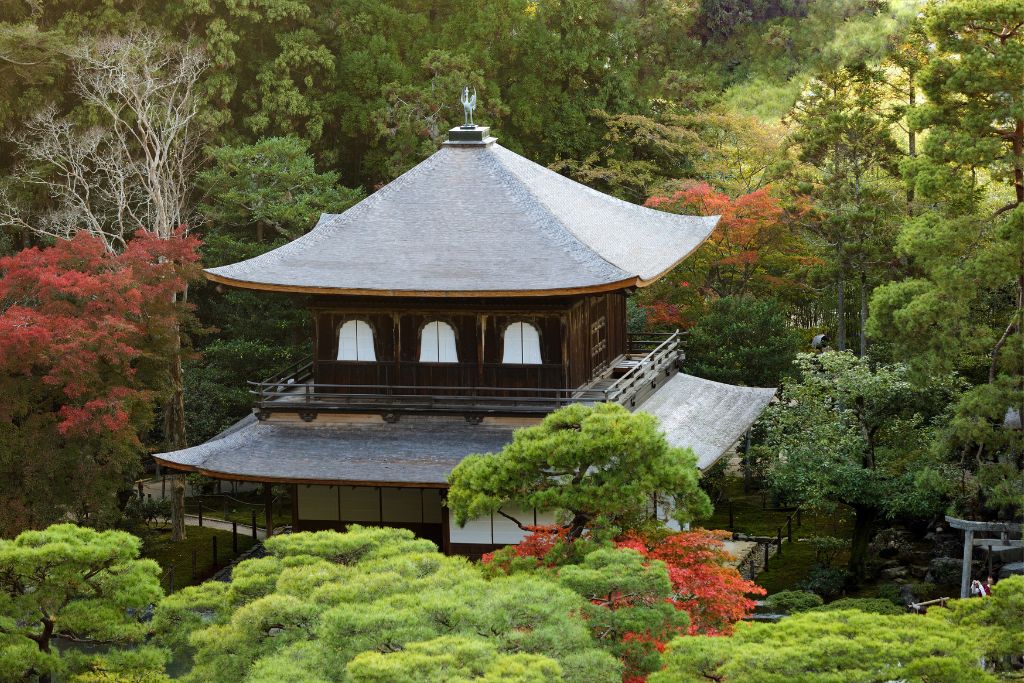
The Philosopher’s Path in Kyoto
Tetsugaku no Michi, as the path is known in English, is a popular pedestrian route stretching along a canal. It’s called Philosopher’s Path for a reason: Nishida Kitaro, a famous philosopher in the 20th century, used to meditate on this route every day. There are many different Philosophers in Kyoto, but the most notable is Kojiro Tatsumi. He is known for his philosophy of “the path of life”, which he believes leads to an understanding and fulfillment of one’s own nature. In addition to his philosophical work, Tatsumi is also a well-known artist and musician. It’s a beautiful, tranquil place to stroll and a great way to see some of Kyoto’s historic temples and shrines. It’s also one of the most popular places to view cherry blossoms, or Hanami, in spring.
Ginkakuji Temple
Ginkakuji Temple (Silver Pavilion) is one of the most popular and beautiful temples in Kyoto. Formerly a retirement villa for the artistic shogun Ashikaga Yoshimasa, Ginkakuji was a centre of the Higashiyama Culture that propagated arts like tea ceremony, flower arrangement, noh theater, poetry, and garden design among the commoners.
It is a great place to explore wabi-sabi, the Japanese aesthetic of restraint and elegance. In addition to the Silver Pavilion, the temple has a moss-covered garden and a unique dry sand garden.

The temple is surrounded by the Lake Biwa Canal, and the canal is a pleasant place to stroll when cherry blossoms bloom in spring or when maple leaves change colors in autumn. The path is also called the Philosopher’s Path and is a popular walking route for tourists.
Honen-in Temple
One of the best temples to visit when strolling along Kyoto’s Philosopher’s Path is Honen-in. It’s a quick 5-minute detour from the main route and is never crowded.
This independent Jodo Buddhist temple is a quiet haven for Zen seekers, especially outside of the autumn leaf season. The approach is lovely, with a thatched-roof main gate and twin sand mounds with seasonal designs etched on top that are said to purify the mind and body.

A few stairways lead to the main cemetery, where the remains of many well-known Japanese intellectuals are. Among them is renowned novelist Jun’ichiro Tanizaki, who left his mark on modern Japanese literature.
Konkai Komyo-ji Temple
Located on Yoshida-yama Hill, Kurodani (Jin Jie Guang Ming Si) is a superb Jodo sect temple and one of the best places to visit in Kyoto, particularly if you’re looking for an alternative to the crowds. A short walk south of Shinnyodo Temple, it’s a quiet and tranquil temple on the edge of Yoshida-yama and has spacious precincts.
A sub-temple here, Saiun-in, contains a rock on which Honen is said to have seen an auspicious purple cloud, leading to the establishment of the temple at this site. From the Saiun-in Subtemple, you can climb up to the pagoda at the top of the hill for great views over Kyoto.

The main hall, which is a reconstruction of the original, features statues of Honen and his followers as well as images of Manju Bosatsu. At sunset, monks can be heard chanting in the main hall. The temple also hosts live music three times a day, so you’ll get an atmospheric and relaxing experience, especially if you’re a fan of traditional Japanese sounds.
Kumano Nyakuoji Shrine
One of the best ways to enjoy Higashiyama is by walking along a canal-side strolling path called the Philosopher’s Path (Tetsugaku-no-Michi), which runs between Ginkaku-ji and Eikando Temple. The path was named after Nishida Kitaro, a Japanese philosophy professor who walked this route every day to meditate.
This is a great way to see some of the most beautiful shrines and tranquil gardens in Kyoto. There are also some interesting cafes and shops to browse.

If you’re looking for a less touristy and quiet place to take in some of the fall colors, head over to Kumano Nyakuoji Shrine, one of three shrines that make up Kumano Sanzan. Emperor Go-Shirakawa founded this temple in 1160, and it is a true non-touristy gem. It’s very woodsy, and the grounds are known for sakura in spring and autumn.
Daimonji Mountain
The Philosopher’s Path is a walker’s delight that follows an old stone canal between Ginkaku-ji and Nanzen-ji. It’s named for 20th-century Kyoto philosopher Nishida Kitaro, who often walked along it in contemplation and meditation.
The path is a great way to escape the whir of city life and connect with Kyoto’s cultural heart. There are a few temples and shrines on the path, as well as a number of small businesses that line the canal.

A popular site on the path is Daimonji Mountain, where a giant Chinese character, called “Da,” is lit up in fire every August for one of Kyoto’s most spectacular festivals, the Daimonji Gozan Okuribi (Obon Fire Festival). The bonfires are large and can be seen from many locations around the city.
While exploring Kyoto’s famous Philosopher’s Path, visitors can enjoy the tranquil and serene atmosphere of the city’s eastern mountains. However, if you’re looking for more hiking opportunities to experience Kyoto’s natural beauty, be sure to check out our article on “Hiking to Takao: Japan’s Most Beautiful City“. This scenic trail takes you through lush forests and past historic temples, offering breathtaking views of the city and surrounding landscape. After hiking Takao, visitors can continue to immerse themselves in Kyoto’s culture by strolling along the Philosopher’s Path, which is lined with cherry trees and leads to a variety of attractions, including the famous Ginkaku-ji temple. For more information on exploring Kyoto’s outdoor wonders, check out our article on hiking to Takao.
